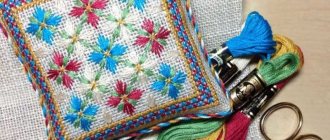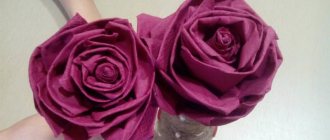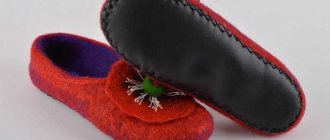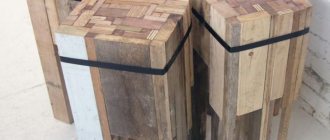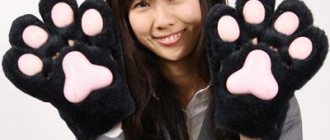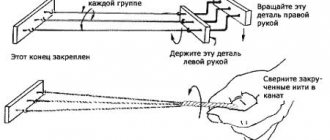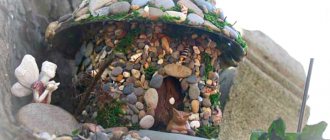A snood is a wide scarf closed in a ring, similar to a collar collar. Its popularity in world fashion gave impetus to the imagination of designers.
Can you crochet? Publish your work on kru4ok.ru
Now the snood can be worn in any season, changing the type of fabric, color, size. For those who love to create exclusive things, there is a great opportunity to hand-crochet several versions of this accessory.
At first, women assumed the exclusive right to wear a knitted snood. However, unisex options with striped or checkered patterns soon appeared. Snood has become a real find for children who do not know how to tie a regular scarf. You can choose your favorite color palette for all family members. And simple crochet techniques make it possible to create unique things, including snoods. Depending on the purpose of the scarf, the fabric is decorated with openwork braids, boucle, and various elastic bands.
Historical reference
The very idea of wearing a scarf around the neck for warmth dates back several thousand years. Thin women's head scarves were worn back in Ancient Rome. The famous terracotta warriors from a Chinese burial over two thousand years old wore scarves around their necks.
In the Middle Ages, women used a ring headband to style and decorate their hair (in some cultures to cover their hair). The economical snood headdress gained popularity during the Second World War.
The progenitor of the modern voluminous snood can be considered a knitted tube - a hat-scarf, which was extremely popular in the 80s of the twentieth century.
Oblique loops
To knit a colored scarf collar with your own hands, take 1 skein of Opal Flower Power yarn (75% wool, 25% polyamide, 425mt/100g) melange color in the desired range and knitting needles No. 3. How to knit a collar: Cast on 132 sts and knit 150 r. according to the pattern in straight and reverse rows, then loosely close the loops. Make a seam.
Warm partner
A traditional snood is knitted with large decorative knitting from thick wool yarn. Even novice craftswomen are quite capable of knitting a snood on thick knitting needles with coarse knitting.
The diameter of the pipe should be large enough to be wrapped twice around the neck and, if necessary, cover the head like a hood. A snood usually covers not only the neck and head, but also the shoulders - those parts of the body through which the most heat is lost.
The hit of the season is the two-turn snood clamp
I suggest knitting a seamless option in two turns using this regular pattern.
You can even knit in three turns if your yarn is light and airy.
Or use garter stitch.
Universal addition
The value of the snood is not only in its functionality. This is a large universal item of clothing that can be combined with clothing in various styles - sports, casual, classic, minimalism, youth, unisex, romantic.
A large scarf serves as either a bright accent or a neutral addition to a catchy, stylish outfit.
Snood braids with knitting needles for beginners
The trend for the coming year is braids, and all kinds of them. For those who know how to knit them, you can take any option as a basis and knit them in the form of an unusual scarf or collar.
Choose any pattern and experiment.
The complex diagram was published in Vesta magazine, I still have this note.
The Celtic braid looks very impressive.
This selection of diagrams and drawings may still be useful to someone.
Well, another simple option in a unisex style is suitable for girls and women of any age.
Stylish decoration
A large ring scarf is not always worn for warmth. Thin openwork items will replace a shawl or stole and will be useful on warm spring days or as decoration for a dress. Thin silk models can protect delicate skin from the scorching rays of the sun in the heat.
If an elegant snood is crocheted, it will serve as a decoration for an evening dress, and for brave girls it will replace a blouse or dress. A warm large tube scarf will successfully replace a bolero, cape, hood, cape.
Note!
- Knitted raglan - step-by-step instructions, patterns, recommendations. Photo review of the best works and new products from craftswomen
- Knitting a shawl - step-by-step instructions for making a shawl with your own hands. Tips for beginners on knitting + photo reviews
- Amigurumi ring ⭕: features of the amigurumi technique. Step-by-step DIY master class with simple knitting patterns + 180 photos
A lush snood to a certain extent replaces fur collars on traditional outerwear - it simultaneously decorates and insulates coats and jackets.
Options
All fashionistas appreciate exclusive clothing items. Nowadays, there are many different options for snoods.
Modern trends in snood styles
Any wardrobe items change over time and under the influence of omnipresent fashion. Current trends in snood styles and patterns:
- voluminous models of coarse simple knitting from thick wool yarn (or its imitation);
- thinner models with complex convex patterns of braids, cones, etc.;
- openwork products made of fine and superfine wool, knitted and crocheted;
- elegant openwork items made of silk and shiny viscose, with a beautiful pattern or even imitating lace. Crochet is becoming more and more fashionable, but circular stoles knitted on knitting needles are not losing their positions.
Selection of material for autumn-spring
To create clothing at these times of the year, materials such as:
- 1) Cotton. This scarf is intended for early autumn and mid-spring. With the onset of cold weather it will become completely unusable;
- 2) Merino is a fine wool. A product made from such material warms, but does not create excessive winter bulk;
- 3) Wool plus acrylic. Cheaper than merino, longer service life;
- 4) Mohair and angora. Light and soft down. However, it is worth considering that rainy weather destroys products made from such yarn.
SELECTION OF MATERIAL FOR WINTER:
- 1) Alpaca. This wool is very soft, delicate, lightweight and at the same time does not allow water to pass through and retains heat.
- 2) Cashmere. Down obtained by combing Tibetan goats that live high in the mountains.
- 3) Acrylic. Durable material that practically does not lose its color over time. Soft, warm enough yarn that does not cause allergies or discomfort when worn.
Fashionable colors and texture
The color scheme changes. Scarves in neutral colors or matching the color of a coat or sweater are still popular. A stole scarf in natural colors - white, gray, sand, brown, beige, straw - will suit almost any look. Interest in black color is supported by its achromatic nature - it can be combined with clothes of any color and style.
The modern trend is to use a model of rich colors, usually in contrast to a coat or jacket. Wine, red, burgundy, terracotta, chocolate colors will suit the look in a classic or casual style.
Dark green and muted blue shades are suitable for casual style. Red, orange, blue, green, blue, yellow - for youth clothing. You can knit a snood for a girl from threads of any color - both bright and delicate pastel shades.
Sectional coloring is often used - it forms small stripes of contrasting colors or shades of the same range.
Note!
- Knitted braids: simple patterns and the best master class for creating patterns with knitting needles. How to knit braids with your own hands + photo reviews
- Knitting booties for newborns: detailed patterns for knitting booties for beginners + 150 photo reviews of the best products
- Mittens - TOP 100 photos of the best creation ideas. Description of the technique + instructions for knitting mitts with your own hands for beginners
The peak of popularity is the use of bouclé and fancy yarn, ribbon, melange, yarn with cones, pendants and pompoms. This yarn can be used to knit the entire product or combine it with smooth yarn. Fringe, embroidery, rhinestones and buttons are used for decoration.
In numerous photos of knitted snood you can see all the variety of modern models.
Crochet snood, products from our website
Scarf - crochet snood Stars from Kabba
Snood scarf “Stars” from Kabba. Project date: May 2022. Technique: knitting, “Stars” pattern. Size: width 35 cm, height 24 cm. Materials: Nako Mohair Delicate Colorflow yarn. color: Mint melange (28080). composition: 40%: Mohair 60%: Acrylic, country: Turkey. Scarf knitting pattern
Read more…
Pineapple hat and snood
Pineapple hat and snood. Crocheted. Gradient. The yarn used was Vita Brilliant 45% wool and 55% acrylic in 100g -380m Germany, colors: 5106, 4999, 4998. I used a pompom made of natural fur 10-12cm. Hook for elastic band No. 4, for cones
Read more…
Set Mint charm from kaRomElka
Set “Mint Charm” with designer embroidery. This charming set is hand knitted. I have attached a diagram of the hat. The hat is knitted from the bottom using an elastic band. The snudik is knitted in the same pattern as the hat. The mittens are knitted with regular STBN. I used yarn
Read more…
Hat and snood from Roxana
A warm set for a girl consisting of a hat and a snood, knitted from Alize Burcum Nokta+ Kartopu Firenze Tiftik. It took almost 3 skeins of Alize acrylic, a little more than one skein of Kartopu mohair. Crocheted 3 mm. Beanie hat with
Read more…
White Cloud set - hat, snood and mitts
Spring set White Cloud, which consists of a hat, snood and mitts. Work by Ksyusha Tikhonenko.
It took me a long time to select a pattern, the first 2 options were started and unraveled, the third option made me very happy, it was knitted slowly, but the result was worth the time spent. I liked this pattern because it is double-sided - great for snoods. The yarn used was Felicita from Alize - composition 45% mercerized wool, 45% acrylic, 10% polyamide, length: 370 m/100g. The whole set took 4 skeins, I used a No. 3 hook, the thread felt soft and silky to the touch. Rows of single crochets are knitted behind the back loop; the elastic on the hat is done with raised single crochets.
Knitting pattern for hat and snood
Snood - scarf from Natalia
New Years is soon! Therefore, now we need to think about gifts for loved ones and family. Therefore, for my beloved mother, I knitted a wonderful scarf - a snood.
Getting started: dial 286 VP and close them into a ring, then knit 1 Dc, 1 VP, 1 Dc. We knit the width that is more acceptable for you, I got 20 rows. It is better to take acrylic threads. Happy New Year, everyone!!! Let dreams come true!!!
Knitting pattern for a scarf - snood
Openwork collar - crochet snood
Openwork collar - snood made of wool mixture. Yarn consumption 100 g, 300 m, hook No. 3. Very easy to perform even for beginners. The base of the collar is knitted with fillet mesh, the edges are decorated with “shells”. Pull through the middle
Read more…
Hat - beanie and snood for girls
Warm autumn set. Hat - beanie and snood - scarf in one turn with a star pattern. The yarn I used was "Children's whim" in two threads and hook number 2. The beanie hat is knitted in linen and then sewn at the back. The most important -
Read more…
Warm scarf - crochet snood from Anna Lev
I knitted the snood scarf with 100% wool threads and 4 mm crochet. It turned out very warm. The scarf was knitted in high single crochet stitches, and the print with a pattern (top and bottom) was knitted according to the attached pattern. I used two thread colors for contrast and
Read more…
Simple crochet snood from Valentina Litvinova
Luxurious fuchsia snood. Knitted from 50% wool + 50% acrylic yarn (300 m - 100 g). Hook No. 3. Dimensions: length - 1.5 m, width - 30 cm. Attached is the diagram. I used the video tutorial on
Read more…
Crocheted scarf - snood, Oksana's work
Hello, I often visit this site and every time I am amazed at how smart and beautiful our women are. What a miracle they create with their own hands, so I decided to share my handicrafts. Don’t judge strictly.
Read more…
Snood - two-color crochet scarf, master - class!
Snood is a two-color scarf with an elastic pattern. Materials: 2 skeins of Magic Jazz yarn 100% microfiber. Hook No. 4.5. Video on knitting the pattern: But I decided to describe this elastic pattern with photographs. Plus, I knitted a two-color snood, so I want to tell you how to knit, not
Read more…
Winter crochet headband and snood from Tatyana Erofeeva
Hello, needlewomen! I want to share with you how I knitted a scarf and headband for my favorite snood. The threads I used were NAKO ALASKA (15% camel hair, 25% wool, 60% acrylic, 204 m, 100 g), white for the binding and the flower.
Read more…
Crocheted snood from Irina
Good afternoon. I would like to introduce you to another one of my works. I’ve been wanting to knit a snood for a very long time, but I couldn’t find a pattern until I came across the “Stars” pattern. Mohair yarn with acrylic (100g/500 meters) melange.
Read more…
Crochet scarf - snood Spikelets, work by Yana
Scarf snood “Spikelets” is crocheted from mohair yarn. It turned out very voluminous and warm. It took 370 grams of yarn. Knitted in the round, without seams. Light yarn - spikelets of lush columns, gray - according to the second scheme. Circular size
Read more…
Basic principles of selection
First you need to determine the period for wearing the future scarf - for winter, spring, summer. It depends on this whether it will be a thick collar, a thin elegant stole or a decorative holey model made of rope yarn, which can only be worn in early autumn or spring.
Then you need to decide on its size. A one-turn snood usually has a length from 45 cm (children) to 50-60 cm for women and 60-70 cm for men. The snood, which is wrapped around the neck and head or shoulders, should have a length of up to 140 cm for adults and 100-130 cm for children and adolescents.
The height of the collar is from 20 cm for a scarf collar to 50-60 cm for a large snood, which is thrown over the head or worn instead of a poncho.
How to calculate product size
Before you start creating a snood, you need to decide what size it will be. The size of the product depends on how many turns it will be wrapped, as well as on the height and circumference of the neck.
In order to calculate the length and width of the clamp, you need to take the following measurements:
- We measure the height of the neck - from the chin to the collarbone. We multiply this value by 2.5. This will be the width of your scarf.
- Let's put our hands in different directions and measure the distance between the fingers. This will be the shortest length for the collar; you cannot knit less, because the collar will not wrap around the neck a couple of times. The length of the product may be longer.
There are generally accepted data for knitting a scarf-collar. After all, there are times when it is not possible to take measurements.
This data can always be found on the Internet.
Crochet or knitting needles
Snoods crocheted using any technique are popular - crocheted, knitted, by hand, with a fork. For beginners, before knitting or crocheting a snood, you need to evaluate your skills, knit samples, determine how much time it takes to knit, and only then choose a knitting tool.
A collar made of thick yarn on knitting needles can be knitted very quickly, and openwork lace made of thin thread can be crocheted only by an experienced knitter.
Clamp on circular knitting needles
Circular knitting needles allow you to knit a seamless collar. Using these knitting needles, the scarf is knitted in a circle. A scarf knitted on such knitting needles will look aesthetically pleasing.
In order to knit a collar on circular knitting needles, you will need:
- Yarn of the desired color 125 m / 100 g;
- Circular knitting needles No.5.
Let's consider knitting a snood with a combination of two patterns. The beginning of the work will be done in garter stitch, and the main part will be an alternation of five L.P. and one I.P.
Description:
- We cast on 180 loops + 1 so that the circle closes correctly and well;
- For a beautiful joint, you need to transfer an additional loop to the first knitting needle and knit it with the first loop;
- Let's start knitting the scarf from the purl row. We knit 2.5 cm in garter stitch;
- Next, we begin to knit our pattern. We look at the diagram and carefully monitor the knitting;
- We finish the snood the same way we started. We knit 2.5 centimeters in garter stitch. We hide the threads from the wrong side.
The clamp is an amazing accessory. It's very versatile. Snood can be worn in different ways: as a scarf, as a headdress, as a bolero.
When the weather outside is bad, there is a cold wind, the collar can be thrown over the hat and it will be much warmer. Scarves can be with different patterns, different colors, both calm and bright. Also, the snood may not be monochromatic, but colored.
You can knit a scarf-collar from various threads. They may include: goat down, various wool. This gives the product additional uniqueness. And also a scarf with natural threads will be much warmer.
Snood can be worn not only by women, but also by men and children. Snood for children is a comfortable scarf. It is safe to wear. Even a small child can handle such a scarf on his own.
You can find various descriptions of snood knitting. They are all quite clear and simple. Both an experienced craftswoman and a beginner can tie a collar.
Beginning of work
Before knitting a snood with knitting needles, you must complete the sample. The dimensions of the sample should be more than 10x10 cm, and in width for a large pattern - at least one repeat. The sample is washed in warm water, dried on a towel and steamed through a damp cloth with an iron.
This operation is performed because many of the threads shrink after washing or seem to lengthen. Now the sample is ready to calculate the loops - we measure the sample, calculate the number of loops and rows, calculate how many loops and rows are in the 10x10 cm sample. Then we calculate the number of loops that need to be cast on for the snood.
The number of rows can be adjusted during the knitting process - and if the number of loops is incorrectly calculated, the scarf will have to be unraveled and re-tied.
Video tutorials on crocheting snoods
Crochet Star Pattern
Several snoods in our selection are knitted with this particular pattern, so we decided to add a master class on knitting this pattern to the selection.
The video should load here, please wait or refresh the page. The video should load here, please wait or refresh the page.
How to crochet an openwork snood scarf
Size: 160*40 cm.
Yarn Yarh Art Super Perlee (400m/100g; 100% acrylic), hook number 3.5. You will also need a knitting needle and scissors.
The video should load here, please wait or refresh the page.
Scarf - crochet snood for beginners
Soft and voluminous. Yarn Dolly Vita 100% Acrylic (50g/300m). Size of the finished product: 22 cm*120 cm, it took 75 g. yarn. Hook No. 3.5.
The video should load here, please wait or refresh the page.
Simple models
The simplest but most effective patterns are knitted on ring needles. The number of loops is calculated based on the fact that the snood is knitted crosswise in one piece. The length of the panel must be divided by 10 and multiplied by the number of loops in a 10 cm sample.
There is no need to add edge loops - they will not be needed. Before tying a snood, read the description carefully.
The simplest and most universal patterns are elastic bands: 1x1; 2x2; 3x1. Rapport (length of one pattern) – respectively 2; 4; 4 loops.
Using leftover yarn
Another simple pattern for a collar on knitting needles is a putanka.
For knitting, you can use leftovers of different colors, of which every knitter collects a huge amount. This pattern is also called rice and pearl. Dimensions: 44 by 78 cm. You will need: - 50 g of yarn with characteristics of 100m/50g of green, olive, kiwi, brown and gray colors; - knitting needles on fishing line No. 5. Knitting pattern: 1st row: k1, purl 1; 2p.: above the face.p. knit a purl stitch, and a knit stitch over the purl stitch. Alternating stripes: 2 stripes: * green, olive, kiwi, brown, gray *. Density: 14 p. = 10 cm.
Knitting pattern: Cast on 110 sts in green, close in a ring and knit with a tangle pattern, alternating stripes as described. After completing 114 r. (=44cm), close all loops loosely.
We knit snood ourselves
Master class - how to knit a snood:
- it is necessary to cast on the number of loops as close as possible to the calculated number of loops and a multiple of the repeat length;
- pull out one of the knitting needles from the cast-on stitches;;
- then start knitting in the round. To do this, the first loop of the second row is knitted over the first cast-on loop;
- then knit to the calculated pipe height (calculated number of loops). The good thing about ring knitting needles is that the knitted product is very easy to try on. As a result of fitting, you can adjust the length of the future snood - tie it a little higher or lower than the planned size;
- The last row must be knitted completely;
- close the loops like this: knit two loops together, throw the wrong knitting needle over; two together, throw them over, etc. At the same time, adjust the length of the loops so that the edge approximately coincides in length with the cast-on edge;
- when the last loop remains, the thread is cut, the tip of the thread is pulled into the loop and the loop is tightened;
- The ends of the threads on both sides are moistened and carefully wrapped around the outer row so that the tip is not visible. This work can be easily done with crochet.
DIY classic snood
We use a simple and effective crochet technique. You don’t need to have any special skills to knit an even fabric without adding or subtracting stitches. First you only need to estimate the length and height of the product; Usually the dimensions have already been calculated and indicated in the available models. Approximately for an adult, a length of 120-130 cm (width 25-30 cm) is sufficient for two turns around the neck.
Now we choose yarn for a summer, winter, demi-season scarf-collar. The main thing is that it is soft and pleasant to the touch.
The following yarn is suitable for crocheting a warm, elegant snood:
- cashmere,
- mohair,
- angora,
- acrylic,
- wool, which contains alpaca and acrylic,
- wool with acrylic 50/50.
In summer, to knit an endless light scarf, use the following thread:
- cotton,
- viscose,
- linen,
- microfiber,
- bamboo.
We offer photos and detailed instructions for crocheting a snood. Each description contains recommendations for choosing yarn, hook numbers, and a detailed knitting pattern.
Foreign fashion designers say that the snood, thanks to its classic shape, will perfectly complement the most discreet outfit. By varying the type and color of yarn, you can create more and more new images for yourself.
For knitting in the round, a hook is an ideal tool, while the product does not have a face or a back - the fabric looks the same on both sides.
Calculation of the dimensions of your product
This simple sign will help you choose the size of the snood if you cannot choose it yourself:
Making the task more difficult
Several of the most popular knitted snood models with descriptions are given below.
For snoods, it is better to choose double-sided patterns - then you will not have to constantly monitor the correct placement of the front side of the scarf.
“Putanka”, “rice”, “checkerboard” and other double-sided patterns look impressive in large scarves. Patent and semi-patent elastic with removed loops give the snood volume.
If Irish patterns (a combination of several types of braids) are chosen for the snood, then you should keep in mind that the braids have the effect of an elastic band and narrow the fabric. Therefore, it is necessary to make the canvas wider than calculated from the steamed sample.
The edges of the knitted pipe can be crocheted with scallops. This simple decoration will protect the edges from rubbing and at the same time decorate the snood. Crocheted fringe looks elegant.
Schemes and descriptions of new products 2020-2021
By the way, you can take absolutely any patterns and knit snoods, look how such a wonderful pattern in the form of a chain will look, just imagine.
It looks fun, doesn't it, the pattern on this crimson clamp is a little different.
Here is another variety of novelty pine cones.
And one more simple and very elegant snood.
By the way, I saw such scarves with ears, but they were all crocheted, so expect a new article soon, I will definitely share))). The kids will definitely love this idea.
In shades of gray you can create such a miracle.
Or anyone who loves openwork designs can use this description.
Photo tips on how to knit a snood
With an original two-tone braid
There are quite a lot of models of clamps with braids.
The difference between the next option is the selection in the original braid of two colors. Dimensions: 23 by 152 cm. You will need: - Bernat Roving yarn (80% acrylic, 20% wool, 109m/100g) - 100g of both colors; - knitting needles 6.5. Density: 12 p. = 10 cm.
Legend: H1 - thread of the first color; H2 - thread of the second color.
How to knit a collar: Cast on 18 stitches with H1 thread and 18 stitches with H2 thread (=36 stitches). 1st row (RS): H1 - * K1, P1. * - 5 times, p1, k7, H2 - k7, p1, * p1, k1. * - 5 rubles; 2 and 4 p.: according to the drawing; 3p.: H1 - * 1p., 1knit. * - 5 r., 1 p., 7 knit., H2 - 7 knit., 1 p., * 1 knit., 1 p. * - 5 rubles; 5p.: H1 - * K1, P1. * - 5 r., 1 p., remove 7 p. on the auxiliary sp. before work, H2 - 7 persons. from the left sp., H1 - 7 faces. with auxiliary sp., H1 - purl 1, * purl 1, knit 1. * - 5 rubles; 6p.: H2 - * 1p., 1knit. * - 5 r., 1 knit., H1 - 7 p., H2 - 7 p., H1 - 1 knit., * 1 knit., 1 p. * - 5 rubles; 7p.: H1 - * P1, k1. * - 5 r., 1 p., H2 - 7 knits., H1 - 7 knits., H2 - 1 purl., * 1 purl., 1 knit. * - 5 rubles; 8 rub.: like the sixth row; 9 rubles: like the seventh row; 10-21 rubles: repeat from the sixth to the ninth rows. 3 times; 22r.: like the sixth r.; 23r.: H1 - * 1 p., 1 knit. * - 5 r., 1 p., remove 7 p. for auxiliary. sp. at work, 7 persons. from the left sp., H2 - 7 faces. with auxiliary sp., 1 p., * 1 knit., 1 p. * - 5 rubles; 24 rubles: like the fourth row; 25-36 rubles: repeat from the first to the fourth rows. 3 times. Knit from the 1st to the 36th row. until the height of the collar is 152 cm, ending with the 36th r. Sew the first and last rows.
Knitting pattern for the “Rhombus” pattern
You can knit a diamond pattern in different ways, it all depends on the desired end result. We offer several options for knitting patterns for the “Rhombus” pattern.
Knitting a scarf with English elastic: pattern
English rib knitting is quite simple. There are two ways to knit it.
As for using English elastic when knitting a snood scarf, there are two options:
- On straight knitting needles, in one piece. Afterwards, sew its ends.
- On circular knitting needles. Then the scarf will be seamless.
How many skeins are needed
Yarn consumption depends on the model and thickness (meterage) of yarn. When planning a purchase for a voluminous product with 2 turns of fluffy elastic, take wool yarn with a reserve of 350-400 g.
- For a small children's hood with a seam under the hood, 200 g of “non-biting” wool mixture of medium thickness is enough.
- Fluffy bobbin yarn is quite thin. It is rewound in 2-3 threads, 150-200 should be enough for a small product.
- A men's snood with a “pipe” (without rotation) will “absorb” no more than 100-150 g of thread.
Important! Yarn for needlework is sold in skeins of 50, 75, 100 and 200 grams. Bobbins for machine knitting can be 230, 300 and 500 g, decorative yarn can be offered in small skeins of 10, 25 and 40 g. The meter varies depending on the thickness. The most popular winter yarn is sold in 100 g quantities - this is within 100-120 meters.
Knitting technique without knitting needles in detail
- For right-handers, the knitting should be placed on the left hand, for left-handers - vice versa.
- When tightening the loops, make them slightly looser, since they will need to be removed from your fingers.
- Choose a thread with a diameter of 3 millimeters or more. Knit the thinner one in a couple of folds.
- When knitting on fingers, the fabric will be in the shape of a narrow tube, approximately the width of the owner’s palm.
- Place one end of the thread at the back of your palm, throw the working thread over your palm, and pinch with your thumb.
- Hold the thread with your right hand and twist it in a figure eight around all your fingers.
- Wrap the little finger, make the binding in the other direction.
- Make a circle around your index finger and continue interlacing to your little finger. Repeat the weave again in the opposite direction to the index finger. There should be four passages with interlacing in total.
- The loops are cast on. There are two loops on each finger. Try not to get the loops mixed up in height. Start with your little finger, remove the bottom loop without moving the top one and throw it over your finger. On the remaining three fingers, repeat the steps with the lower loops.
- Place the free end of the thread on the back of your hand between your middle and index fingers, away from you.
- By now there is only one loop left on the fingers. Repeat the weave from the index to the little finger and back. Then move on to knitting the next row. To do this, remove the lower loops, starting with the little finger, throw them over the fingers one by one.
- In this technique, continue knitting to the required height. The finished strip will be located on the back of the hand.
- To complete knitting, there should be one loop left on your fingers. Transfer the loop from the little finger to the ring finger. On the ring finger, remove the bottom loop by moving it behind your finger. Place the top one over your middle finger. Follow the same pattern to your index finger. Pass the bottom loop over your finger, leaving one loop on your index finger. Cut the thread, leaving a small piece.
- Remove the loop from your index finger, pass the cut tail through it and tighten tightly. Also secure the end of the thread that was at the beginning of knitting.
Images with snood for inspiration: photo
Share with your friends!
Read us in the Zen channel
Scarf snood hood: patterns for knitting, ideas with photos
We offer several schemes for creating a transformable snood, which with a slight movement of the hand can turn into a headdress.
We offer photos of ideas on how to design such an accessory.
Swedish elastic: knitting pattern diagram
The repeat of the Swedish elastic pattern is four loops, so you should cast on a multiple of the number of loops + 2 edge loops. Knit the first row with a regular 2X2 rib. The second row is knitted offset by one stitch, as in the diagram below. All subsequent ones repeat the first and second row.
